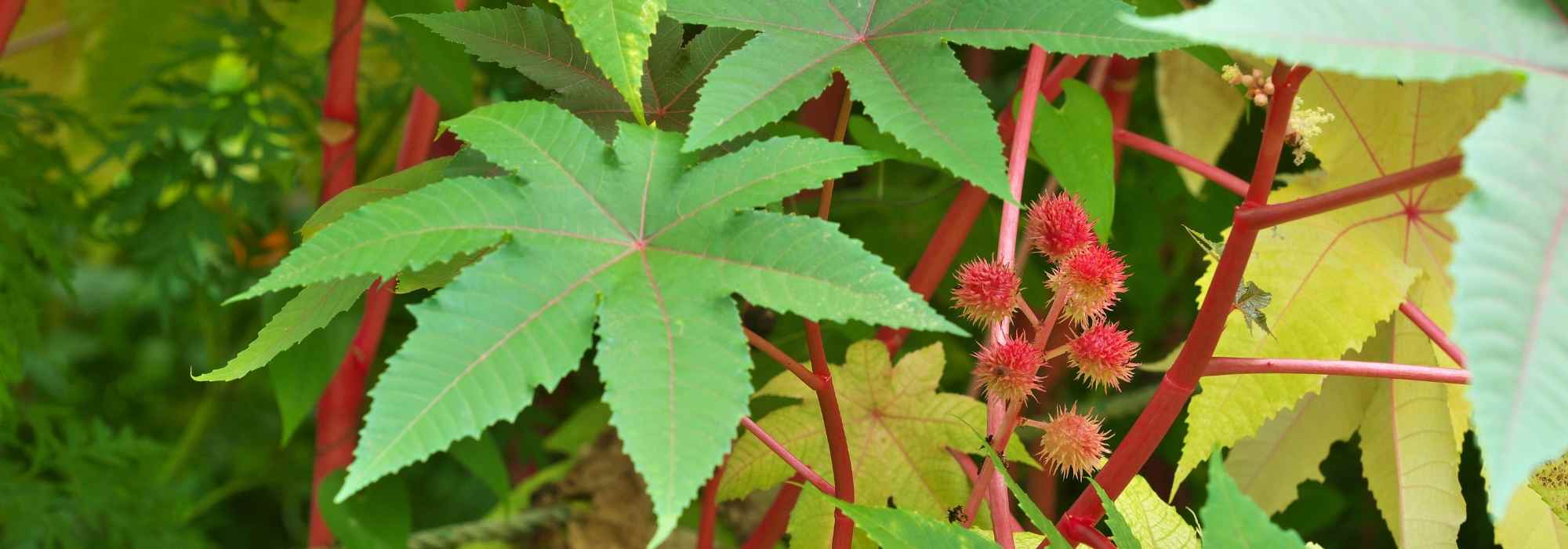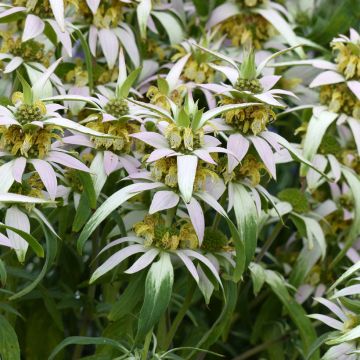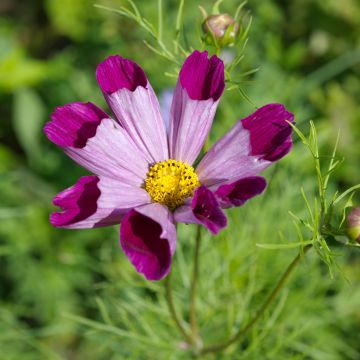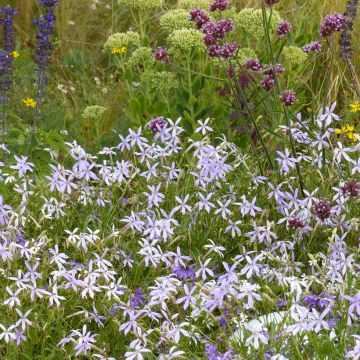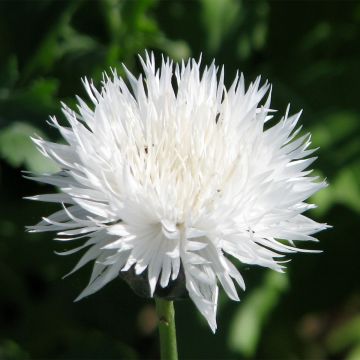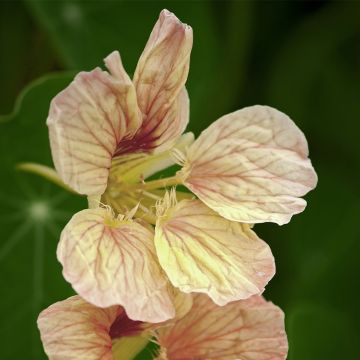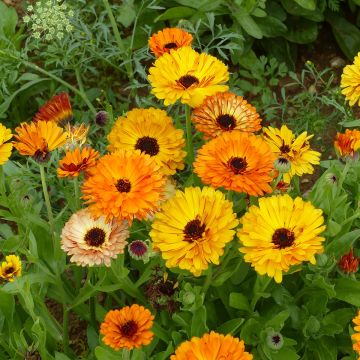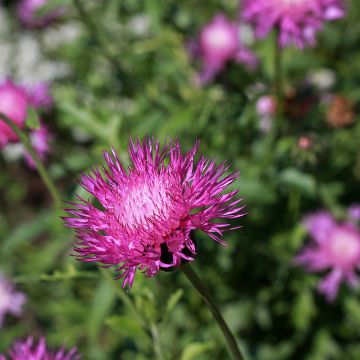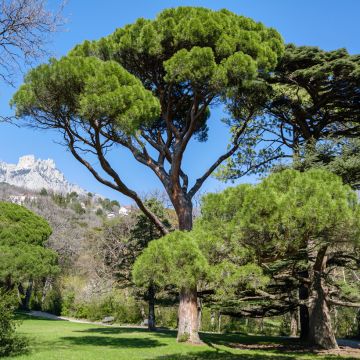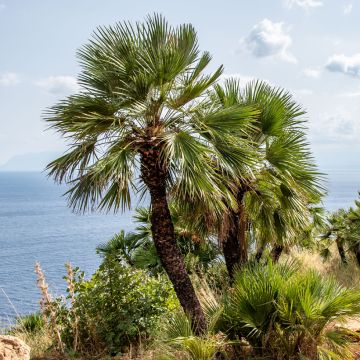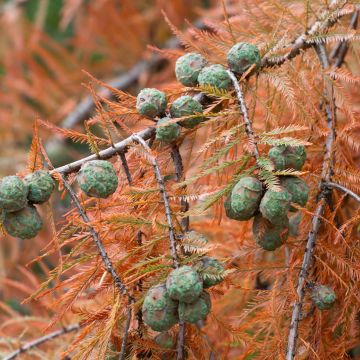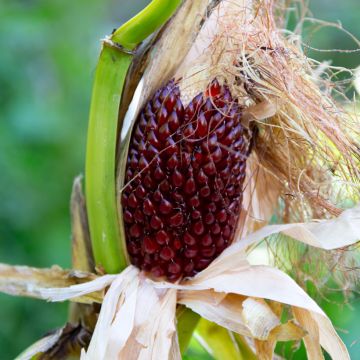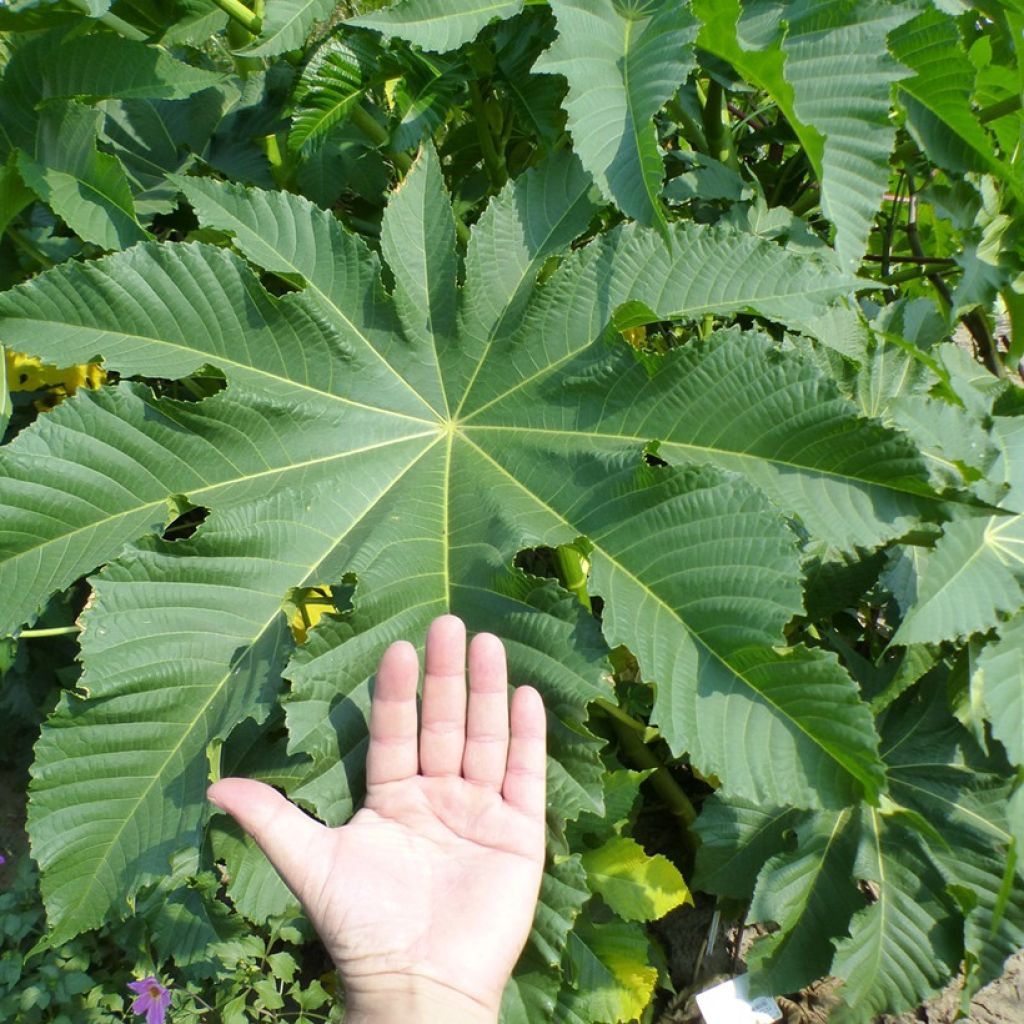

Ricinus communis Zanzibarensis seeds - Castor Bean
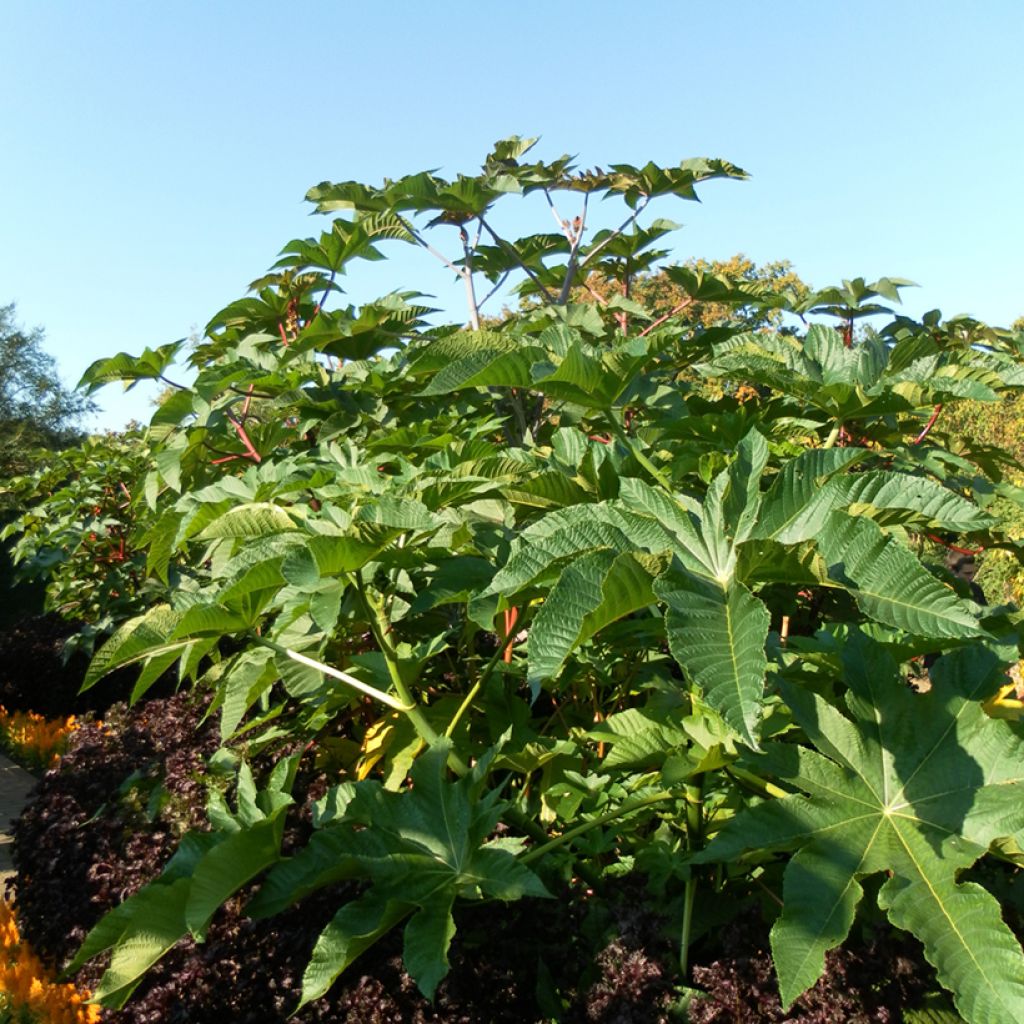

Ricinus communis Zanzibarensis seeds - Castor Bean
Ricinus communis Zanzibarensis seeds - Castor Bean
Ricinus communis Zanzibarensis
Castor Oil Plant, Castor Bean
Special offer!
Receive a €20 voucher for any order over €90 (excluding delivery costs, credit notes, and plastic-free options)!
1- Add your favorite plants to your cart.
2- Once you have reached €90, confirm your order (you can even choose the delivery date!).
3- As soon as your order is shipped, you will receive an email containing your voucher code, valid for 3 months (90 days).
Your voucher is unique and can only be used once, for any order with a minimum value of €20, excluding delivery costs.
Can be combined with other current offers, non-divisible and non-refundable.
Home or relay delivery (depending on size and destination)
Schedule delivery date,
and select date in basket
This plant carries a 6 months recovery warranty
More information
We guarantee the quality of our plants for a full growing cycle, and will replace at our expense any plant that fails to recover under normal climatic and planting conditions.
Would this plant suit my garden?
Set up your Plantfit profile →
Description
The Zanzibar castor bean (Ricinus communis 'Zanzibarensis') is a spectacular exotic plant, perfect for adding a tropical touch to the garden. Its oversized foliage, composed of large palmate leaves, along with its rapid growth, make this plant a must-have for lush flower beds. When planted in the ground, this castor bean can reach up to 2.50 m in height in a single season. Planted in a large pot, it transforms terraces and balconies. Not frost-hardy, this castor bean is grown as an annual in temperate climates. Sow in spring, under cover from March or directly in the ground after the last frosts.
Ricinus communis 'Zanzibarensis' belongs to the Euphorbiaceae family. Native to tropical Africa, particularly Ethiopia, Eritrea, and Somalia, the species Ricinus communis has become naturalized in many tropical and subtropical regions worldwide. The 'Zanzibarensis' cultivar was introduced in 1870. It stands out for its more imposing size and highly ornamental foliage. This shrubby plant has an upright habit and extremely rapid growth. In the ground, it can reach a height of 2 to 3 m in a single season in temperate climates, and up to 4 m under optimal conditions. When grown in pots, its size is generally more modest, ranging between 1.5 and 2 m. The leaves, with an impressive diameter of 60 to 90 cm, are palmate with 5 to 12 toothed lobes. They are green, accentuated by whitish veins, with a reddish margin. The robust, thick, and hollow stems can be green or reddish. Flowering occurs in summer, between June and August. The inflorescences in clusters are located at the top of the stems. The male flowers, situated at the base of the inflorescence, feature prominent pale yellow stamens, while the female flowers, positioned at the top, have distinctive red pistils. Pollination is primarily anemophilous (wind-dependent), though insects may also contribute. The fruits are spherical tricoccous capsules, bristly with spines, measuring about 3 cm long and 1.6 cm wide. When ripe, these capsules release ovate, glossy seeds, marbled with red or brown, containing 40 to 60% oil rich in triglycerides, mainly ricinolein. All parts of the plant, especially the seeds, are highly toxic if ingested.
Historically, the castor bean has been used since antiquity, notably by the Egyptians, for extracting its oil with purgative and cosmetic properties. Despite its toxicity, castor oil is employed in various applications, from traditional medicine to the production of lubricants and cosmetic products.
The 'Zanzibarensis' castor bean, with its lush vegetation, is particularly prized for adding an exotic and tropical touch to gardens and green spaces. It quickly fills a garden corner at little cost, guaranteeing a striking display. To create a perfectly exotic setting, plant a Chinese windmill palm Trachycarpus fortunei and a Japanese banana (Musa basjoo) as a backdrop. Pair it with large, colourful cannas such as 'Marabout'.
Ricinus communis Zanzibarensis seeds - Castor Bean in pictures


Flowering
Foliage
Plant habit
Safety measures
Botanical data
Ricinus
communis
Zanzibarensis
Euphorbiaceae
Castor Oil Plant, Castor Bean
East Africa
ingestion
Cette plante est toxique si elle est ingérée volontairement ou involontairement.
Ne la plantez pas là où de jeunes enfants peuvent évoluer, et lavez-vous les mains après l'avoir manipulée.
Pensez à conserver l'étiquette de la plante, à la photographier ou à noter son nom, afin de faciliter le travail des professionnels de santé.
Davantage d'informations sur https://plantes-risque.info
Other Flower seeds A to Z
View all →Planting and care
The Zanzibar Castor can be sown:
- Either in March-April, in pots, under shelter at 20°C, to prepare young plants that can be placed in your flower beds after the last frosts.
- Or from April to June, after the frosts, directly in place. In a sunny spot in your garden, in fertile and well-drained soil.
Soak the seeds for 24 hours to soften them. Sow your seeds in groups of 2 at a depth of 1 cm and spaced 1m apart in open ground. After 20 days, remove the weakest seedling to keep only one per spot. The vigorous growth of the Castor will require regular watering on very rich soil. You can apply Triple 17 granular fertiliser. Avoid planting your castor plants in windy locations, where they will need staking.
Sowing period
Intended location
Planting & care advice
This item has not been reviewed yet - be the first to leave a review about it.
Similar products
Haven't found what you were looking for?
Hardiness is the lowest winter temperature a plant can endure without suffering serious damage or even dying. However, hardiness is affected by location (a sheltered area, such as a patio), protection (winter cover) and soil type (hardiness is improved by well-drained soil).

Photo Sharing Terms & Conditions
In order to encourage gardeners to interact and share their experiences, Promesse de fleurs offers various media enabling content to be uploaded onto its Site - in particular via the ‘Photo sharing’ module.
The User agrees to refrain from:
- Posting any content that is illegal, prejudicial, insulting, racist, inciteful to hatred, revisionist, contrary to public decency, that infringes on privacy or on the privacy rights of third parties, in particular the publicity rights of persons and goods, intellectual property rights, or the right to privacy.
- Submitting content on behalf of a third party;
- Impersonate the identity of a third party and/or publish any personal information about a third party;
In general, the User undertakes to refrain from any unethical behaviour.
All Content (in particular text, comments, files, images, photos, videos, creative works, etc.), which may be subject to property or intellectual property rights, image or other private rights, shall remain the property of the User, subject to the limited rights granted by the terms of the licence granted by Promesse de fleurs as stated below. Users are at liberty to publish or not to publish such Content on the Site, notably via the ‘Photo Sharing’ facility, and accept that this Content shall be made public and freely accessible, notably on the Internet.
Users further acknowledge, undertake to have ,and guarantee that they hold all necessary rights and permissions to publish such material on the Site, in particular with regard to the legislation in force pertaining to any privacy, property, intellectual property, image, or contractual rights, or rights of any other nature. By publishing such Content on the Site, Users acknowledge accepting full liability as publishers of the Content within the meaning of the law, and grant Promesse de fleurs, free of charge, an inclusive, worldwide licence for the said Content for the entire duration of its publication, including all reproduction, representation, up/downloading, displaying, performing, transmission, and storage rights.
Users also grant permission for their name to be linked to the Content and accept that this link may not always be made available.
By engaging in posting material, Users consent to their Content becoming automatically accessible on the Internet, in particular on other sites and/or blogs and/or web pages of the Promesse de fleurs site, including in particular social pages and the Promesse de fleurs catalogue.
Users may secure the removal of entrusted content free of charge by issuing a simple request via our contact form.
The flowering period indicated on our website applies to countries and regions located in USDA zone 8 (France, the United Kingdom, Ireland, the Netherlands, etc.)
It will vary according to where you live:
- In zones 9 to 10 (Italy, Spain, Greece, etc.), flowering will occur about 2 to 4 weeks earlier.
- In zones 6 to 7 (Germany, Poland, Slovenia, and lower mountainous regions), flowering will be delayed by 2 to 3 weeks.
- In zone 5 (Central Europe, Scandinavia), blooming will be delayed by 3 to 5 weeks.
In temperate climates, pruning of spring-flowering shrubs (forsythia, spireas, etc.) should be done just after flowering.
Pruning of summer-flowering shrubs (Indian Lilac, Perovskia, etc.) can be done in winter or spring.
In cold regions as well as with frost-sensitive plants, avoid pruning too early when severe frosts may still occur.
The planting period indicated on our website applies to countries and regions located in USDA zone 8 (France, United Kingdom, Ireland, Netherlands).
It will vary according to where you live:
- In Mediterranean zones (Marseille, Madrid, Milan, etc.), autumn and winter are the best planting periods.
- In continental zones (Strasbourg, Munich, Vienna, etc.), delay planting by 2 to 3 weeks in spring and bring it forward by 2 to 4 weeks in autumn.
- In mountainous regions (the Alps, Pyrenees, Carpathians, etc.), it is best to plant in late spring (May-June) or late summer (August-September).
The harvesting period indicated on our website applies to countries and regions in USDA zone 8 (France, England, Ireland, the Netherlands).
In colder areas (Scandinavia, Poland, Austria...) fruit and vegetable harvests are likely to be delayed by 3-4 weeks.
In warmer areas (Italy, Spain, Greece, etc.), harvesting will probably take place earlier, depending on weather conditions.
The sowing periods indicated on our website apply to countries and regions within USDA Zone 8 (France, UK, Ireland, Netherlands).
In colder areas (Scandinavia, Poland, Austria...), delay any outdoor sowing by 3-4 weeks, or sow under glass.
In warmer climes (Italy, Spain, Greece, etc.), bring outdoor sowing forward by a few weeks.






























